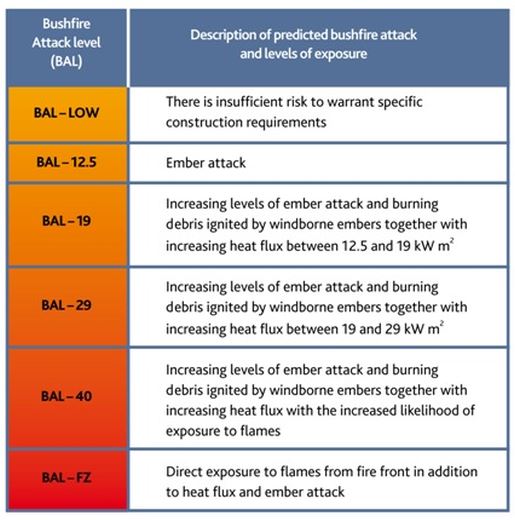You should be aware of the fact that your new house will have to comply with various Australian Standards if you ever want to receive an occupation certificate allowing you to live in it.
In 2011, the Building Code of Australia was packaged together with the Plumbing Code of Australia and is now known as the National Construction Code. This hefty document sets out minimum standards for all building and plumbing installations right across Australia. The aim is to regulate the health, safety and amenity of buildings. As such, the codes are revised every so often to ensure they are up-to-date with the latest know how.
I’m sure you can remember that in late January and February 2009, a series of devastating bushfires swept through parts of Victoria and many people lost their lives and homes. After the dust had settled, the Victorian Bushfires Royal Commission was set up with the task to investigate the cause and make recommendations. In the end they made 67 recommendations, one of which was directed at the Building Code of Australia. This resulted in some changes being made to Australian Standard: 3959 Construction of buildings in bushfire-prone areas 2009 (AS3959).
AS3959 now includes a requirement that all new or modified buildings reduce the risk of ignition from ember attack.
To do this, sites are assessed and assigned a Bushfire Attack Level (BAL). Each level corresponds to a particular level of risk. The standard also sets out what you would then need to do to mitigate or reduce that risk to an acceptable level. There are 6 BAL ratings. You can read all about them here.
Most likely, your local council will have assigned a BAL rating to the site before you’ve purchased it. It’s probably in your land sales contract, but you could always ask the developer or your council directly for it.
For most of us, what we really want to know is how much is it going to cost? Well, depending on your BAL rating, the size of your house and your builder the answer could be a lot. Our land sales contract says our lot is a BAL 40. We were quoted $24 000 to make the two story house comply.
The problem we have is that the numbers aren’t adding up. Just looking at the site, I think a BAL 40 seems a bit extreme. There are some trees, but I wouldn’t say we were living next door to a forest or anything! I’ve since discovered that your BAL rating is often assigned to the whole development, not your individual lot, sometimes even before it has been cleared for subdivision. Suddenly, I want a second opinion!
So, after a bit of a google, I found an independent assessor who is happy to go to our site, have a look around and give us his/her opinion on what the BAL rating should be. If it’s good news, we can pay a second fee and they will prepare a formal report to go with the development application. Hopefully, in the long run it will save us some dollars. We are expecting to hear back from them this week, so I’ll keep you posted on the outcome.
If you’re interested in how the BAL rating is assigned, or would like to give it a go yourself, you can download the BAL Risk Assessment Application Kit.


This is great, most people dont realise they can get an independant assessor for this. I cant wait to hear his/her verdict.
Pingback: Update on our BAL | conerstone26